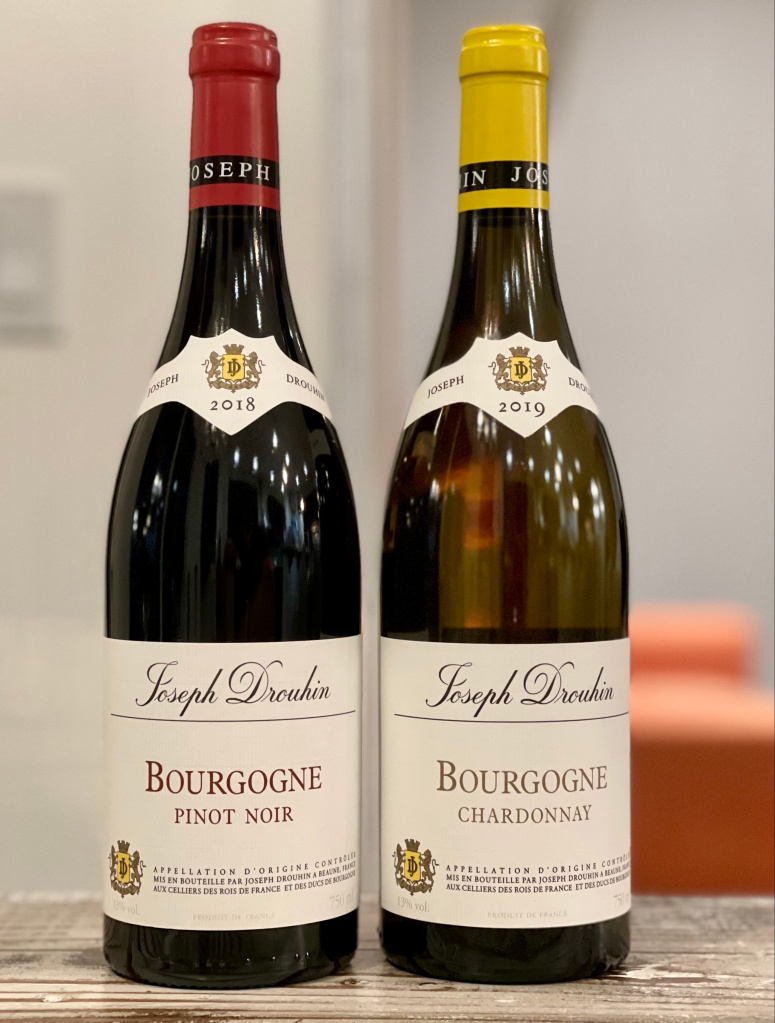By Peter Vetsch
[These bottles were provided as samples for review purposes.]
And we’re back. After a brief summer hiatus that involved winery visits, wildfires, new home purchases, way too much packing (with much more to come) and a tiny bit of unplugging from the electronic world, we are hitting the ground running for the impending fall season and have a number of posts lined up for the next few months. Many of them, including the one scheduled after this, focus their attention on uncharted waters: new regions, grapes and bottles, the next frontier of wine exploration. One of the most beautiful things about wine appreciation is that the horizon always stretches farther, and the universe of experience and education is for all practical purposes infinite, allowing for a continual push toward the novel and unexpected. That said, every so often there is value in checking back in with the benchmarks, those classic regions, producers or expressions that have become the North Stars for a particular varietal or style. When we weigh a new vinous experience, we subconsciously measure it against those comparators that first taught us what a given grape or appellation is all about, which can anchor our expectations of what it means to successfully execute concepts like Cabernet Sauvignon, or traditional-method bubbles, or Bordeaux. When the concepts and expectations are shifted to Pinot Noir, Chardonnay and Burgundy, one of the key benchmarks and measuring sticks is undoubtedly Joseph Drouhin.
Maison Joseph Drouhin was founded in Beaune in 1880 as a small negociant producer. Three generations later, it is a Burgundian lodestone, with property in nearly 90 different appellations in Burgundy strewn across 80 hectares located from Chablis in the north down to the Cote Chalonnaise in the south, all meticulously purchased over the years. Joseph Drouhin’s four grandchildren now run the estate, including head winemaker Veronique Drouhin-Boss, (who is also in charge of the winery’s excellent Willamette Valley venture Domaine Drouhin Oregon). Drouhin was one of the first producers in Burgundy to do away with chemical pesticides and revert to horse plowing and natural compost in the fields; now all of its estate vineyards are farmed organically and biodynamically. Their dense plantings, arranged to secure low and concentrated yields, hail from vine stocks grown in their own nursery so that the estate can retain full control over plant quality. While Drouhin’s single-vineyard expressions include some of the most rare and sought-after Crus in all of Burgundy, today we explore the baseline Bourgogne appellation wines which return Maison Joseph Drouhin to its negociant roots, using purchased fruit from longtime suppliers located all across Burgundy to craft a template for white and red Burgundy.

2019 Joseph Drouhin Bourgogne Chardonnay (~$25)
A clear sign that this is a wine marketed as an introduction to Burgundy to casual drinkers is the express inclusion of the grape name on the label. Joseph Drouhin’s Batard-Montrachet Grand Cru bottling does not similarly state “Chardonnay” on the bottle, although it is equally made from the same grape. I am fully in favour of demystifying wine and letting people who may be brand new to Burgundy know what they’re drinking; the Germans and Alsatians have long since routinely named grapes on their labels without the Old World collapsing under its own weight. 2019 was a seesaw vintage where a heatwave in June and July flicked the switch on a cooler spring and led to ideal ripening, albeit with lower yields overall. The grapes for this Bourgogne Blanc came from trusted Drouhin suppliers from all across Burgundy, and were matured based on the pedigree of their site: the wines from most locations were aged 7-8 months in stainless steel vats, but those made from higher-provenance sites were matured in 1-2 year-old oak barrels.
The result is an approachable and fruit-laden lure into the charms of white Burgundy. Its medium lemon-straw colour belies an intriguing, expressive nose that combines a more classic stony lemon drop, white floral, mountain stream and flint aroma set with more flamboyant notes of coconut oil (suntan lotion?), Bounce sheets, peach Perrier and angel food cake. Rich yet middleweight on the tongue, it propels itself using a powerful steam of consistent, straight-ahead acid that is the first and last thing you notice about the wine. Flares of Bananas Foster, pineapple Lifesaver and butterscotch flesh out an otherwise-controlled base of ripe citrus and orchard fruit, with that chalky, rocky accent so prevalent in the grape and region re-emerging on a mineral finish. The heat of the vintage shows up in the bottle, which portrays the foundational building blocks of Chardonnay’s spiritual homeland with a verve and energy that will encourage newcomers to keep exploring what this legendary area has to offer.
88 points

2018 Joseph Drouhin Bourgogne Pinot Noir (~$27)
This is not the first and will not be the last time that this blog empathizes with the challenges associated with producing compelling entry-level Pinot Noir. Chardonnay can grow basically anywhere, and is one of the easier grapes to turn into solid, drinkable wine. Pinot is a finicky nightmare by contrast, only showing its true potential when conditions are just so and when it is guided by a knowledgeable hand. That combination of factors does not lend itself to starter price points, and even this Burgundy-wide introductory offering is pushing $30. Its quest to lure in the next generation of Pinot Noir fanatics is likely aided by the warm, lush 2018 vintage, where spring rains quickly gave way to a hot, dry summer. Ripening proceeded at such a pace that the harvest began in August and was largely wrapped up by the first week of September; even so, the resulting wines were bold and generous.
I always appreciate seeing appellation-wide entry-level wines show vintage variation as opposed to remaining static and homogenous regardless of the world around them. Wine should be a reflection of time and place, and this one is just that, emerging from the bottle a deeper, thicker ruby hue than most would expect of French Pinot with a dense and brooding aroma set to match. Blackberry, sultana and plum fruits replace the anticipated strawberry and cherry, a product of warmth and ripening, the surrounding more classic notes of leather, gunpowder, topsoil and violets not quite restraining an ebullient fruity core. Much like the Chardonnay above, the Bourgogne Pinot Noir carefully controls its palate weight without diminishing its intensity, the fleshy fruit retreating slightly to make room for herbal rhubarb and chamomile, pepper and wet leaves. Scrappy tannins cling to the tongue as you swallow, belatedly revealing surprising structure previously covered in silk. What this may give up in delicacy it makes up in presence, honesty and potential ageability. Don’t forget the classics.
87+ points






Leave a comment